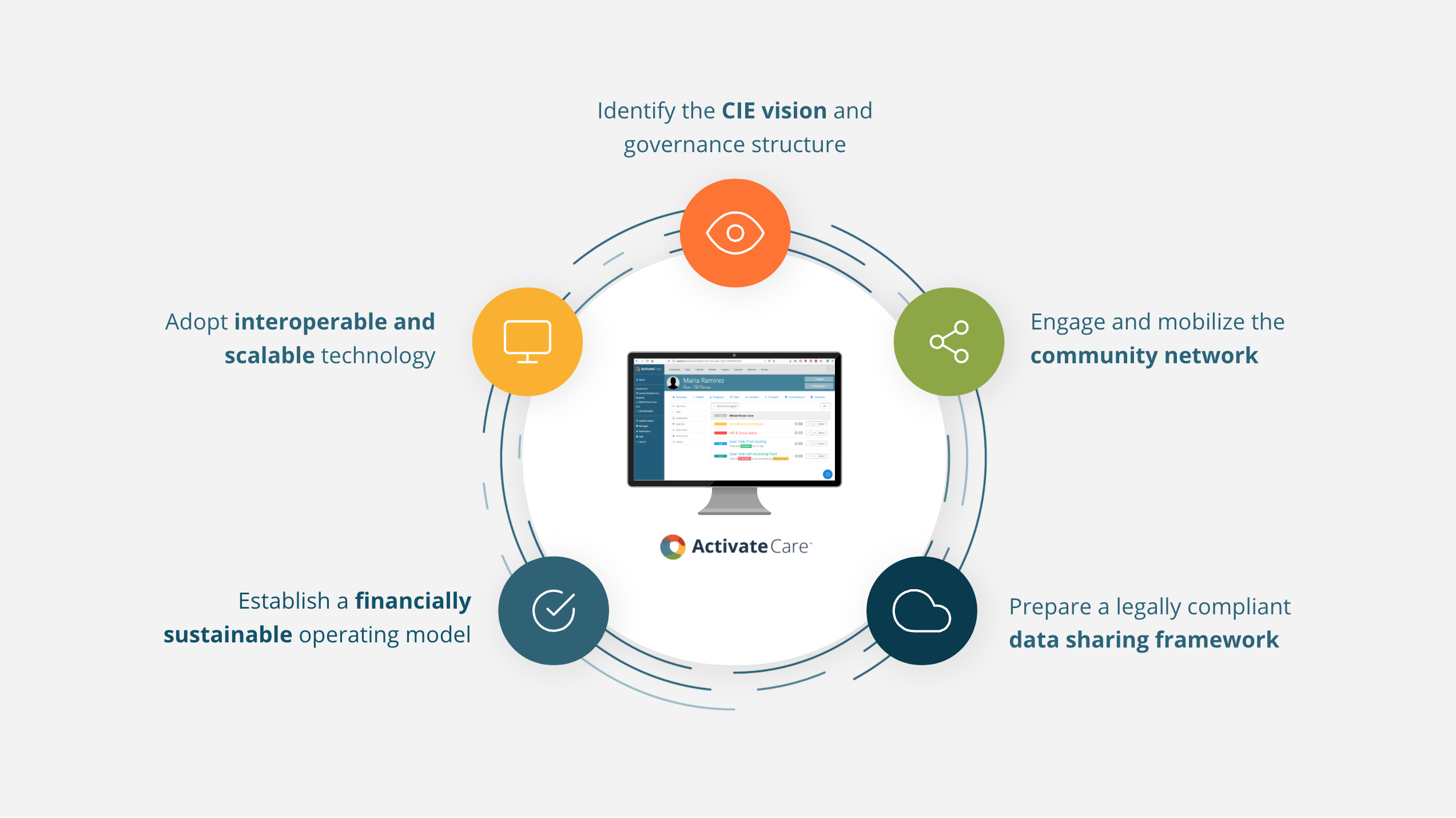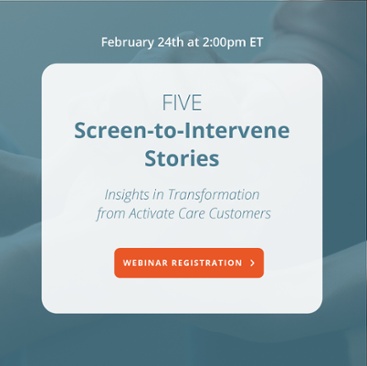Imagine if our healthcare and social services systems could coordinate care across all of our medical, mental, and social needs, at any point in time. This vision can be achieved through the successful implementation of a Community Information Exchange, or CIE*.
In this post, the Activate Care team offers a framework for considering how far along you are on the CIE Journey, and steps to take to achieve readiness for implementation of a full CIE solution in your community.
What is CIE and how does it work?
A CIE is an ecosystem comprised of multidisciplinary network partners that use a shared language, a resource database, and an integrated technology platform to deliver enhanced community care planning.
2-1-1/CIE San Diego has been recognized as a national leader for its success in creating and launching the original Community Information Exchange in practice, which uses these elements of shared data, common language, and technology to unite providers across sectors.
As defined by CIE San Diego, care planning tools enable partners to integrate data from multiple sources and make bi-directional referrals to create a shared longitudinal record. By focusing on these core components, a CIE enables communities to shift away from a reactive approach to providing care toward proactive, holistic, person-centered care.

Steps to Readiness on the CIE Journey
San Diego's journey to Community Information Exchange began with grant funding in 2012. Over the course of their years-long journey to building the data sharing capacity of hundreds of diverse organizations, the CIE San Diego team has served as a model for other communities across the United States.
In our conversations with many communities who are now embarking on this journey themselves, the Activate Care team has drawn on our experiences supporting innovative community care coordination, closed-loop referral, and cross-sector data exchange initiatives. The lessons we have learned from these experiences can also inform the steps you take in your CIE Journey.
Identify the CIE vision and governance structure
A natural starting point for embarking on the CIE journey in your community is the vision and planning stage. It is common for a lead entity (often called a backbone or convening organization) to set the parameters of this process.
Key activities and deliverables in the CIE Vision and Planning stage can include:
- Conducting an environmental scan
- Convening initial partners for early discussions about CIE
- Developing sample use cases for CIE to clarify the vision
- Establishing the governance structure
- Formally recognizing the backbone organization
Engage and mobilize the community network
By definition, a CIE is a community network, and its operations are governed by local decision-makers. Local members of a CIE contribute to these operations in different ways, based on the population they serve and their ability to participate in coordinated care.
Key activities and deliverables in the CIE Community Engagement stage can include:
- Launching a community engagement team
- Establishing different tiers or levels of engagement
- Pitching the value of network membership to local organizations
- Enrolling service providers in the network
- Training service providers on network processes
Prepare a legally compliant data sharing framework
Because a CIE combines health data with data from other sectors such as education, social services, and housing, there are many laws, regulations, and standard operating procedures to consider at the local, state, and federal/national levels.
Key activities and deliverables in the CIE Data Sharing Framework stage can include:
- Launching a legal compliance working group
- Developing data-sharing agreements
- Establishing standard consents for CIE participants
- Defining roles and permissions for access to information
- Establishing security and privacy standards for data management
Adopt interoperable and scalable technology
The vendor landscape for the many components of a Community Information Exchange solution can be daunting to navigate. Some vendors offer more than one component, such as a resource directory, while others offer a more complete package, including referral management, care coordination, and analytics. Community engagement is key to ensuring that the community dictates the implementation of a CIE, rather than the technology systems that might be selected.
Key activities and deliverables in the CIE Technology selection and implementation stage can include:
- Analyzing data systems and current state of information sharing
- Launching a system design and technology working group
- Vetting and selecting technology providers to support your vision
- Leading implementation of technology for different tiers of engagement
Establish a financially sustainable operating model
While some CIE convening organizations may have funding to offer the program, the CIE initiative will benefit from taking a long-term, community-based view of all financial needs. Local funders and healthcare payers may be in the best position to help, but even these relationships need to be cultivated.
Key activities and deliverables in CIE Funding and Sustainability stage can include:
- Determining CIE operating costs over time
- Identifying sources of funding for start-up, launch, and scale periods
- Grant-writing, philanthropic, and business development activities
- Developing a value proposition and model for determining ROI
- Engaging public sector leaders to advance CIE in public policy
*‘Community Information Exchange’ and/or ‘CIE’ are registered trademarks of Community Information Exchange, Inc., and no claim of ownership is made thereto by any use herein.
